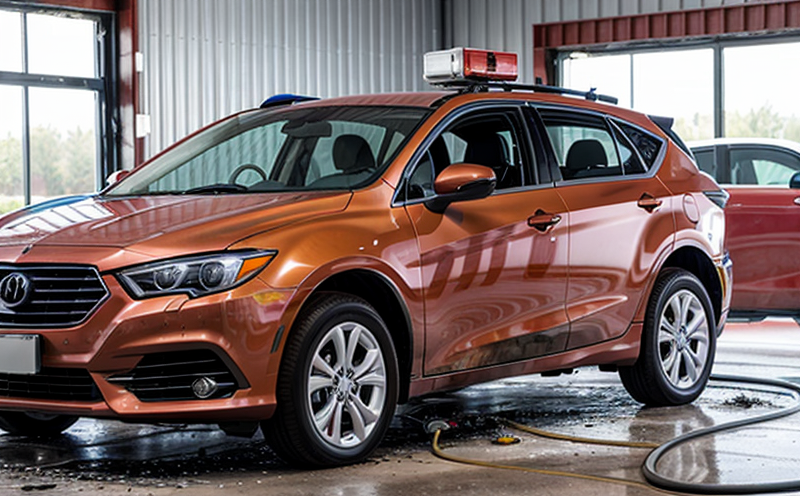Fire Safety Testing of Vehicle Headliners
The fire safety testing of vehicle headliners is a critical aspect of automotive design and manufacturing. Vehicle headliners are the inner coverings that provide comfort, insulation, and aesthetic appeal within the vehicle cabin. They play a vital role in ensuring occupant safety during a fire incident by providing a heat-resistant barrier to prevent flames from spreading into the passenger area.
Automotive manufacturers must adhere to stringent fire safety regulations such as ISO 16892:2015, which sets out the requirements for flammability testing of interior materials in vehicles. Compliance with these standards ensures that headliners meet the necessary flame retardant properties and structural integrity under high-temperature conditions.
Fire safety tests on vehicle headliners involve subjecting specimens to controlled combustion environments designed to simulate real-world fire scenarios. The objective is to measure how quickly the material ignites, how much heat it releases, and whether it sustains or extinguishes flames. This testing helps identify potential risks and ensures that any necessary modifications are made before production.
The testing process typically includes several key steps:
- Material selection: Choosing appropriate materials based on the intended use of the headliner.
- Specimen preparation: Cutting samples according to specific dimensions outlined in relevant standards.
- Pre-test conditioning: Ensuring specimens are at a stable temperature and humidity level before testing.
- Test setup: Configuring equipment such as flame spread apparatus, calorimeters, and thermocouples for accurate measurement.
The results of these tests provide critical data that informs design choices and material selection processes. By understanding how different materials perform under fire conditions, engineers can optimize designs to enhance safety without compromising performance or aesthetics.
Why It Matters
Ensuring the fire safety of vehicle headliners is not just about meeting regulatory requirements; it's also about protecting lives. In the event of a fire, the effectiveness of these materials can significantly influence the outcome for occupants inside the vehicle.
The automotive industry places high emphasis on preventing fires within vehicles and ensuring that any such incidents do not lead to severe consequences. Fire safety testing helps manufacturers identify weak points in their designs early in the development cycle, allowing them to address issues proactively rather than reactively after a fire incident has occurred.
Moreover, consumer trust is built on reliable fire safety features. Vehicles that pass rigorous testing instill confidence among consumers regarding product quality and safety standards. This trust can translate into higher sales figures and better brand reputation.
Industry Applications
| Application | Description |
|---|---|
| VIP Passenger Vehicles | Ensuring headliners can withstand high temperatures without igniting or spreading flames. |
| Sport Utility Vehicles (SUVs) | Testing the durability and flame resistance of headliners in rugged environments where prolonged exposure to fire risks is possible. |
| Commercial Trucks | Evaluating how well headliners contribute to occupant safety during potential engine fires or other internal combustion events. |
- VIP passenger vehicles often have more luxurious and intricate headliner designs, making them prime targets for thorough fire testing.
- SUVs frequently operate in areas where environmental hazards like wildfires could pose a threat to vehicle occupants.
- Commercial trucks are subject to unique challenges, including risks of engine fires or other internal combustion events that require robust headliner materials capable of withstanding these stresses.
Eurolab Advantages
Eurolab offers comprehensive fire safety testing services specifically tailored to meet the needs of automotive manufacturers. Our team of experienced professionals ensures that every test is conducted according to international standards, providing reliable and accurate results.
We employ state-of-the-art equipment and facilities designed to replicate real-world fire scenarios as closely as possible. This allows us to provide data that accurately reflects how different materials will perform in various conditions. Our expertise lies not only in conducting tests but also in interpreting the results, offering actionable insights for improving product design.
Eurolab's commitment to quality and precision extends beyond our technical capabilities. We maintain close relationships with industry leaders, ensuring that we stay abreast of emerging trends and best practices in fire safety testing. This allows us to offer innovative solutions that go above and beyond traditional testing methods.





